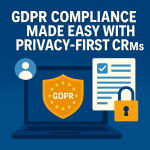Insurance and telematics are changing how we think about car insurance. No longer are drivers locked into flat-rate plans based on age, gender, or ZIP code. Instead, usage-based insurance, powered by telematics, offers a smarter, fairer way to pay. Safe drivers can save more. Occasional drivers can pay less. And everyone benefits from the transparency it brings.
In this article, we’ll explore how usage-based insurance and telematics work together to create personalized premiums. We’ll break down the technology, its benefits, and why it’s becoming the future of auto insurance.
How Insurance and Telematics Power Usage-Based Insurance
Insurance and telematics go hand in hand. Telematics refers to the technology that collects driving data. Devices installed in your car—or apps on your phone—track your behavior on the road. This includes how fast you drive, how hard you brake, how sharply you turn, and how far you travel. All this data feeds into insurance algorithms that calculate your risk.
Usage-based insurance relies on this real-time information. Rather than judging you by broad statistics, insurers look at your actual driving habits. This allows them to offer personalized premiums that reflect your true risk profile. For safe drivers, it means lower premiums. For insurers, it means better risk management.
Insurance and telematics form the backbone of a system that’s both smarter and more efficient.
The Mechanics Behind Personalized Premiums
Insurance and telematics work behind the scenes, collecting and analyzing data. Here’s how the process works:
- Data Collection: Every time you drive, telematics devices record key metrics—speed, location, time, and behavior.
- Behavioral Analysis: Algorithms evaluate the data to understand how safely you drive.
- Risk Scoring: Based on behavior, you receive a risk score that influences your premium.
- Premium Adjustment: Safe drivers get rewarded with personalized premiums.
Each step uses automation, but it reflects very human behavior—caution, consistency, and control.
Benefits of Usage-Based Insurance for Drivers
Insurance and telematics offer real rewards. The benefits go beyond just saving money.
- Lower Costs: Safe, low-mileage drivers often see reduced premiums.
- Behavioral Awareness: Drivers become more conscious of their habits.
- Eco-Friendly: Driving less means fewer emissions.
- Fairness: Your premium reflects your actual risk, not someone else’s statistics.
Imagine getting a discount simply for driving how you already do. That’s the promise of usage-based insurance.

10 Techniques That Make It Work
Insurance and telematics rely on multiple layers of tech and strategy. Here are ten key elements that make personalized premiums possible:
1. Real-Time GPS Tracking
It monitors where you drive. Risky areas? Congested zones? Your route matters.
2. Speed Monitoring
Speeding often correlates with accidents. Staying within limits earns rewards.
3. Harsh Braking Detection
Sudden stops may indicate distracted driving. Smooth braking is safer.
4. Cornering and Acceleration Analysis
Sharp turns and fast starts are signs of risk. Gentle movements get better scores.
5. Mileage Logging
Driving fewer miles lowers risk. Low mileage equals lower premiums.
6. Time-of-Day Tracking
Nighttime or rush-hour drives carry more risk. Drive during safe hours, pay less.
7. Driver Recognition
In shared cars, systems can identify who’s driving. Your score stays yours.
8. Vehicle Diagnostics
Some telematics tools monitor your car’s health. Safe, well-maintained vehicles matter.
9. Geofencing
Driving in high-risk areas can impact your score. Avoid them for savings.
10. App Dashboards
Real-time feedback helps you improve. Track your behavior, watch your premium drop.
These systems don’t just observe—they empower. With feedback and insight, drivers can actively improve.
Challenges and Concerns: What to Consider
Insurance and telematics bring transparency, but also questions. What about privacy? Who owns your driving data? How is it used? These are valid concerns.
Insurers must commit to ethical data handling. Clear consent, encryption, and opt-out options are critical. Without trust, the system fails.
Another challenge? Standardization. Not all telematics tools are created equal. Poor accuracy could misjudge your behavior and impact your premium unfairly.
Insurance and Telematics: The Future is Personal
Insurance and telematics are steering the industry toward personalization. No two drivers are the same. So why should their premiums be?
This model rewards safe driving. It reduces guesswork. It cuts costs. And it helps both insurers and customers make smarter choices.
As technology evolves, even more data could be considered. Biometric sensors. Emotional analysis. Weather data. But for now, usage-based insurance is a strong step forward.
Conclusion: Insurance and Telematics Help You Save More
Insurance and telematics are redefining how we experience car insurance. By focusing on real behavior instead of general stats, usage-based insurance provides personalized premiums for real people.
You can drive smarter. You can save more. You can take control. This isn’t just the future of insurance—it’s the present. And it’s putting power back in your hands.
So, whether you’re a new driver, a cautious commuter, or someone who rarely hits the road, remember this: with insurance and telematics, every mile counts—and every safe choice saves.






